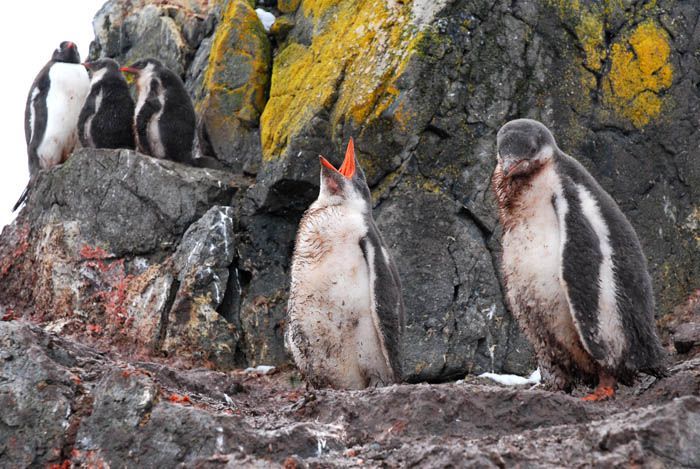|
|
Penguins
|
• Palaeeudyptines
During the Late Eocene and the Early Oligocene (40–30 mya), some lineages of gigantic penguins existed. Nordenskjoeld's Giant Penguin was the tallest, growing nearly 1.80 meters (6 ft) tall. The New Zealand Giant Penguin was probably the heaviest, weighing 80 kg or more. Both were found on New Zealand, the former also in the Antarctic farther eastwards.
Traditionally, most extinct species of penguins, giant or small, had been placed in the paraphyletic subfamily called Palaeeudyptinae. More recently, with new taxa being discovered and placed in the phylogeny if possible, it is becoming accepted that there were at least two major extinct lineages. One or two closely related ones occurred in Patagonia, and at least one other—which is or includes the paleeudyptines as recognized today – occurred on most Antarctic and subantarctic coasts.
But size plasticity seems to have been great at this initial stage of penguin radiation: on Seymour Island, Antarctica, for example, around 10 known species of penguins ranging in size from medium to huge apparently coexisted some 35 mya during the Priabonian (Late Eocene). It is not even known whether the gigantic palaeeudyptines constitute a monophyletic lineage, or whether gigantism was evolved independently in a much restricted Palaeeudyptinae and the Anthropornithinae – whether they were considered valid, or whether there was a wide size range present in the Palaeeudyptinae as delimited as usually done these days (i.e., including Anthropornis nordenskjoeldi). The oldest well-described giant penguin, the 5-foot (1.5 m)-tall Icadyptes salasi, actually occurred as far north as northern Peru about 36 mya.
|
|









